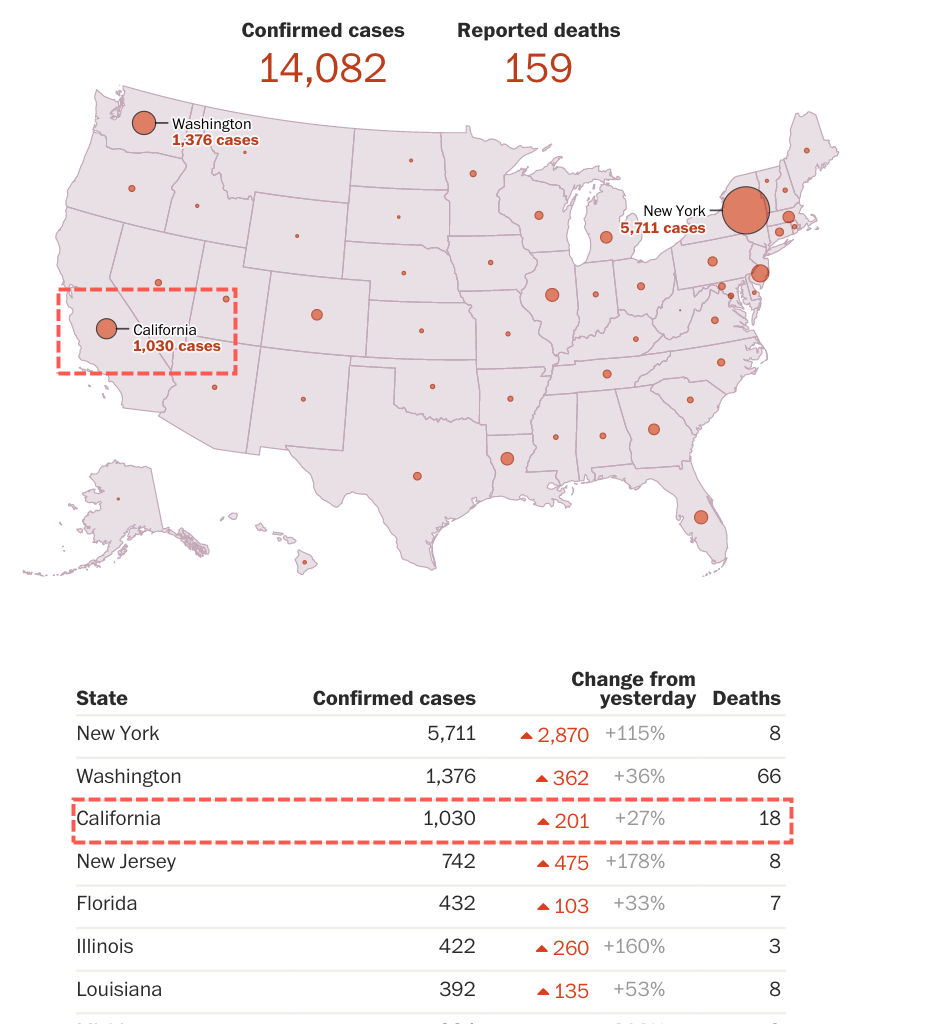The number of confirmed COVID-19 cases in the US has more than doubled in the last several days. California Governor Gavin Newsom has issued a state-wide “stay at home” order amid the virus outbreak – the strongest and most restrictive measure passed by a governor yet.
On Tuesday, there were about 5,700 confirmed cases in the US. But by Thursday the number exploded to 11,500. Now, on Friday morning, confirmed cases stand at 14,000.
The announcement comes after San Francisco and the surrounding Bay Area issued ‘shelter in place’ orders after a surge of deaths and confirmations in the state. As of Friday morning, there are 18 virus-related deaths.
Several days into one of the most extreme lockdowns, Bay Area residents have been forced to stay at home, only allowed to leave for essential travel, such as shopping for groceries, medications, fuel, caring for others, and exercise.
NBC News spoke with one resident, Trish Tracey, who had to shutter her restaurant on Tuesday in the Mission district. She laid off her entire kitchen staff of 17 employees and has tried to renegotiate her lease.
“Everything is out of our control,” Tracey said.
The uncertainty of where the city is in the pandemic curve has left everyone confused. Strict social distancing rules have been enforced to slowdown infections to prevent local hospitals from becoming overburden with virus patients.
“The goal is to get up and running again and put all my employees back to work,” Tracey said. “I wish I could say with certainty that would happen, and I’m very determined, and I lasted five years because of that, but everything is on pretty shaky ground right now.”
The mass lockdown in San Francisco is serving as the blueprint of how other local governments in the state might have to resort to Martial law-style lockdowns. Other states, such as New York and Maryland, could be days or weeks away from a major lockdown to flatten the curve.
Bay Area hospitals have started seeing an influx of COVID-19 patients in recent weeks:
“This is a challenge unparalleled to any challenge I have faced in the last 28 years of my career,” Dr. Baldev Singh, a pulmonary critical care physician in nearby San Jose.
Singh warned that the local hospital system could experience a worker shortage.
“Protecting your teammates is as important as ever, as the number of infected individuals needing support is anticipated to exceed the number of healthy providers able to serve those in need.”
Another problem for local hospitals is an influx of virus patients could lead to a shortage of hospital beds and ICU-level treatment for the most vulnerable, and this is the point when mortality rates could surge.
On Thursday, Newsom estimated 56% of the state’s population, about 25.5 million people, will become infected.
